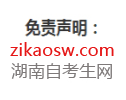gmenting the book into the four notebooks and one realistic short novel, Doris Lessing allows the reader to perceive diverse facets of realities from multiple perspectives, just as cubists have done in their paintings. While keeping the traditional temporal form of story telling, she experiments with the techniques of juxtaposition and cross-reference to achieve the spatial effect of visual arts. The integration of time and space makes her work escape the limitation of literary narratives, thus, acquiring a greater potential in its readings. The device of making the novel rolling in time and at the same time, extending in space, bears much resemblance with the artistic technique of time-space union in cubists’ compositions. In addition, more than once the reader feels the presence and the intervention of the writer herself in the book. The intervention of the writer and her continual comments on the novel writing in the book render the book highly reflexive. The highly reflexive quality in The Golden Notebook also proves its heritage from Cubism.
It is not unexpected that the form of The Golden Notebook is a cubist work in a literary sense in terms of its aesthetic shaping principles since Lessing and Picasso share the same view as to the inaccessibility of reality and the technique of representing reality. So the form in The Golden Notebook itself is a representation and a metaphor of Lessing’s understanding of external reality and the relation between reality and the representing form.
The shaping principles of Cubism are only one part of the shaping principles of the form in Lessing’s remarkable work. The shaping dynamics of a work in a particular historical time is very complex and is determined by many factors. Nevertheless, it provides a fresh reading of the novel and proves Lessing’s great ability to produce a great work characteristic of creativity and originality.
The thesis has examined closely the technical characteristics and the shaping principles in the form of The Golden Notebook. As Terry Eagleton suggests, the form is the true bearer of ideology. The examination of the novel form in The Golden Notebook should go deeper to its ideological core, which constitutes broader and more complex social and political context from which a specific work arises. Although the ideology behind the novel form is too big a topic to be covered in this thesis, the research on the ideology in the form is a worthwhile effort. The further investigation on the ideology in the form of The Golden Notebook is to be tackled in the near future.
Bibliography
[1] Abrams, M. H. A Glossary of Literary Terms[M]. Beijing: Foreign Language Teaching and Research Press, 2004.
[2] Aristotle. The Poetics. in Classical Literary Criticism[M]. Baltimore: Penguin, 1965.
[3] Bloom, Harold. “Introduction” to Modern Critical Views: Doris Lessing[M]. New York: Chelsea House Publishers, 1986.
[4] Bookshelf, “Profile of Doris Lessing” produced by Abigail Appleton, BBC Radio, May 1, 1992.
[5] Bradbury, Malcolm. The Modern British Novel: 1878-2001[M]. Beijing: Foreign Language Teaching and Research Press, 2004.
[6] Brooks, Ellen W. “The Image of Women in Lessing’s Golden Notebook.” in Critique: Studies in Modern Fiction. 11thissue, November 7, 1973.
[7] Burgess, Anthony. The Novel Now: A Guide to Contemporary Fiction. New York: Norton, 1967.
[8] Burke, Kenneth. The Philosophy of Literary Form.[M]. 3rd, ed.. Berkley & Los Angeles: University of California Press, Ltd., 1973.
[9] Crane, R. S. The Languages of Criticism and the Structure of Poetry[M]. Toronto: University of Toronto Press, 1953.
[10] Culler, Jonathan D. Structuralist Poetics: Structuralism, Linguistics, and the Study of Literature[M]. Ithaca: Cornell University Press, 1975.
[11] Dostoevsky, Fyodor. Notes from Underground. Translated by Richard Pevear & Larissa Volokhonsky. New York: Vintage Books, a division of Random House, Inc., 1993.
[12] Dryden, John. Essays[M]. ed. W. P. Ken. New York: Russell and Russell, 1961.
[13] Eagleton, Terry. Marxism and Literary Criticism[M]. Berkeley: University of California Press, 1976.
[14] Ellen, Walter. The Modern Novel in Britain and the United States[M]. New York: Dutton, 1964.
[15] Faulkner, William. As I Lay Dying. New York: Vintage International, 1990.
[16] Faulkner, William. The Sound and the Fury. New York: Random House, Inc., 1992.
[17] Frank, Joseph. “The Spatial Form in Modern Literature” in The Widening Gyre: Crisis and Mastery in Modern Literature[M]. New Brunswick: Rutgers University Press, 1963.
[18] Fry, Edward F. Cubism[M]. Oxford: Oxford University Press, 1978.
[19] Frye, Joanne S. Living Stories, Telling Lives: Women and Men in Contemporary Experience. Ann Arbor: University of Michigan Press, 1986.
[20] Genette, Gerard. Narrative Discourse: An Essay in Method[M] .Ithaca: Cornell University Press, 1980.
[21] Gindin, James. “Doris Lessing’s Intense Commitment” in Modern Critical Views: Doris Lessing. ed. Harold Bloom. New York: Chelsea House Publishers, 1986.
[22] Greene, Gayle. Doris Lessing: The Poetics of Change[M]. Ann Arbor: The University of Michigan Press, 1994.
[23] Howe, Irving. “Review of The Golden Notebook” in Critical Essays on Doris Lessing. ed. Claire Sprague and Virginia Tiger. Boston: G. K. Hall, 1986.
[24] James, Henry. “The Art of Fiction” in The Norton Anthology of American Literature, Vol. 2. New York: W. W. Norton and Company, Inc., 1979.
[25] Jameson, Frederick. The Political Unconscious: Narrative as a Socially Symbolic Act[M]. Ithaca: Cornell University Press, 1982.
[26] Joyce, James. Ulysses. Berkley: University of California Press, 1988.
[27] Kampt, Louis. On Modernism: The Prospects for Literature and Freedom[M]. Cambridge: M.I.T Press, 1967.
[28] Karl, Frederick R. A Reader’s Guide to the Contemporary English Novel[M]. New York: Farrar, Strauss and Giroux, 1971.
[29] Lardner, Susan. “Angel on the Ordinary” in New Yorker. Sept. 19, 1983.
[30] Lessing, Doris. The Golden Notebook[M]. New York: HarperPerennial, A Division of HarperCollins Publishers, 1994.
[31] Lessing, Doris. A Small Personal Voice[M]. ed. Paul Schueter. New York: Vintage Books, A Division of Random House, 1975.
[32] Lessing, Doris. Critical Studies[M]. ed. Pratt and L. S. Dembo. Madison: The University of Wisconsin Press, 1974.
[33] Lyndon, Susan. Review of Lessing’s The Golden Notebook Ramparts, Jan. 1970.
[34] McDowell, Frederick P. W. “The Fiction of Doris Lessing: An Interim View” in Arizona Quarterly 21, 1965.
[35] Pater, Walter. The Renaissance. Chicago: Academy Press, 1977.
[36] Pickering, Jean. Understanding Doris Lessing. [M].Columbia: University of South Carolina, 1990.
[37] Read, Herbert. A Concise History of Modern Painting. [M].New York: Thames and Hudson, 1985.
[38] Showalter, Elaine. A Literature of Their Own: British Women Novelists from Bronte to Lessing. Beijing: The Foreign Language Teaching and Research Press, 2004.
[39] Sterne, Laurence. The Life and Opinions of Tristram Shandy, Gentleman. London: Penguin Books Ltd., 1978.
[40] Taubman, Robert. “Free Women” in On Contemporary Literature. ed. Richard Kostelanetz. New York: Avon, 1964.
[41] Taylor, Jenny. “Introduction: Situating Reading” in Notebook, Memoirs, Archives: Reading and Rereading Doris Lessing. ed. Jenny Taylor. Boston: Routledge, 1982.
[42] Vargish, Thomas. & Mook, Delo E. Inside Modernism. [M].New Haven: Yale University Press, 1999.
[43] Wellek, René. The Parallelism between Literature and the Arts. [M].New York: Columbia Press, 1942.
[44] Wellek, René. “Concepts of Form and Structure in Twentieth-Century Criticism” in Concepts of Criticism. [M].New Haven: Yale University Press, 1963.
[45] Whittaker, Ruth. Modern Novelists: Doris Lessing. New York: St. Martin’s Press, 1988.
[46] Williams, Raymond.
[47] Williams, Raymond. The Long Revolution. [M].London: The Hogarth Press, 1992.
[48] Wilson, Elizabeth. “Yesterday’s Heroines: On Rereading Lessing and de Beauvoir” in Notebook, Memoirs, Archives: Reading and Rereading Doris Lessing. ed. Jenny Taylor. Boston: Routledge, 1982.
[49] Woolf, Virginia. “Modern Fiction” in Norton Anthology of English Literature. New York: W. W. Norton and Company, Inc., 1985.
[50] 陈才宇(Chen Caiyu). “内容也是形式:《金色笔记》释读”.《外国文学评论》,1999(4): pp72-75.
[51] 姜红(Jiang Hong). “有意味的形式”.《外国文学》,2003(4): pp95-98.
[52] 杰拉尔·热奈特(Gerard Genette).“叙事的界限”. 摘自 《叙述学研究》. 张
寅德编. 王文融译. 北京: 中国社会科学出版社,1989.
[53] 莱辛(Gotthold Ephraim Lessing).《拉奥孔》[M]..朱光潜译. 北京:人民文学出版社,1979.
[54] 李维屏(Li Weiping).《英美意识流小说》[M]..上海:上海外语教育出版社,1996.
[55] 王佐良,周钰良(Wang Zuoliang & Zhou Yuliang).《英国二十世纪文学史》.
北京:外语教学与研究出版社,1994.
[56] 殷企平,高奋(Yin Qiping & Gao Fen).《英国小说批评史》[M]..上海:上海外语教育出版社,2001.
[57] “Cubism,” Microsoft® Encarta® Online Encyclopedia 2005.
http://encarta.msn.com © 1997-2005 Microsoft Corporation. All Rights Reserved. October 5, 2005.
[58]
TEL:蒋老师17773102705
扫一扫下方二维码关注湖南自考生网微信公众号、客服咨询号,即时获取湖南自考、成考、网教最新考试资讯。

关注公众号免费拿资料

微信扫一扫咨询

微信扫一扫咨询

1、鉴于各方面资讯时常调整与变化,本网所提供的信息仅供参考,实际以考试院通知文件为准。
2、本网部分内容来源于网络,如有内容、版权等问题请与本网联系,我们将会及时处理。联系方式 :QQ(393848300)
3、如转载湖南自考生网声明为“原创”的内容,请注明出处及网址链接,违者必究!